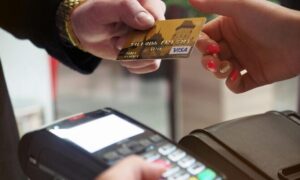As businesses adapt to the post-pandemic new normal, contactless payments have become increasingly popular as a safer and more convenient way of conducting transactions. According to a report by Decta, contactless payments have raised 25% after the pandemic. The rise in contactless payments has raised concerns over transaction security. Merchants must take steps to ensure that payment transactions through a POS or point of sale terminal are secure, protecting both their customers and their business.
Below are the strategies discussed that merchants can adopt to ensure transaction security amid the growing demand for contactless payments.
- Secure POS Terminal: Selecting a secure POS terminal is the first step in ensuring transaction security. Choose a POS vendor with an excellent reputation for security and reliability. Merchants can choose from a multitude of POS terminals that offer a range of security features. However, to enhance the security of payment transactions, it is crucial to ensure that the selected POS terminal meets the Payment Card Industry Data Security Standard (PCI DSS) compliance standards. This provides a level of assurance that the POS terminal adheres to specific security guidelines and protocols, offering an extra layer of security. Additionally, they should ensure that the POS terminal is EMV compliant, meaning it can accept chip-enabled credit and debit cards, which provide extra security compared to magnetic stripe cards.
- Encryption: Encryption is the process of converting sensitive payment data into a code that cannot be deciphered, reducing the likelihood of unauthorized access. Businessmen should ensure that their POS terminals are equipped with encryption capabilities to protect customer data. End-to-end encryption ensures that sensitive payment details are encrypted throughout the transaction, from the moment the card is swiped or inserted into the POS terminal until approval of the transaction.
- Two-Factor Authentication: Two-factor authentication (2FA) involves requiring users to provide two forms of a valid identification before accessing an account. This is a highly effective security measure that significantly increases the difficulty for unauthorized parties to gain access to the user’s account, ensuring the security and privacy of crucial payment account information.
- Software Updation: Keeping the POS software up to date is crucial in ensuring the highest level of transaction security. They should regularly check for updates and patches that address known vulnerabilities or security issues. Using outdated software exposes the POS terminal to potential security breaches, making it easier for cybercriminals to gain access to payment data.
- Educated Employees: A significant proportion of data breaches result from human error, such as employees falling victim to phishing scams or engaging in unsafe web browsing. Therefore, they should educate and train their employees on how to recognize potential security threats, including suspicious emails or unfamiliar websites. Additionally, employees should be trained on best practices for end-of-day procedures, such as ensuring all payment data is securely stored and devices are turned off.
Conclusion
As we move towards a cashless society, contactless payments have surged, leading to a rising need for secure transaction methods. Merchants prioritize transaction security and take necessary measures to protect their customers’ payment data as well as their businesses.
Adoption of a secure POS terminal, encryption, two-factor authentication, software updates, and employee training are some of the security measures that can be implemented to enhance the security of payment transactions. By adopting these strategies, merchants can ensure that transactions through their POS terminals are secure, providing a safe and secure payment experience for their customers.



































